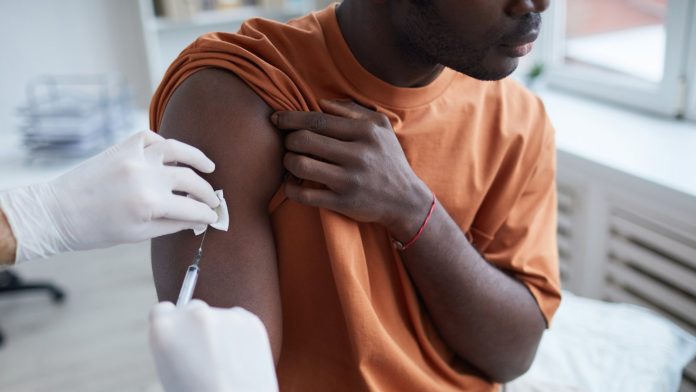The KEMRI-Wellcome Trust research institution has found that a lower dose of the yellow fever vaccine is just as effective as the standard dose.
The study, conducted in Kenya and Uganda with 480 volunteers who had no previous history of the disease or vaccination, revealed that a 500 IU dose was not significantly less effective than the standard 13,803 IU dose after 28 days.
Conducted between November 11, 2019, and April 4, 2022, the study used a yellow fever vaccine manufactured by Institut Pasteur de Dakar in Senegal. Research was carried out at the KEMRI-Wellcome Trust Kilifi facility in Kenya and the Epicenter Mbarara Research Centre in Uganda.
Volunteers aged 18 to 59 were randomly assigned to receive either the full standard dose or one of three fractional doses: 1000 IU, 500 IU, or 250 IU. The researchers found that the difference in seroconversion rates between the 1000 IU and 500 IU doses and the standard dose was minimal—around 0.01%—with no significant reduction in effectiveness.
The study also reported 111 side effects, most of which were mild (103 cases). Seven cases were classified as moderate, and only one was severe. The incidence of side effects was consistent across all dosage groups.
These findings support the World Health Organization’s (WHO) recommendation to administer one-fifth of the standard dose (500 IU) during outbreaks or pandemics. This strategy could help address vaccine shortages in times of crisis.
Yellow fever is transmitted to humans by infected mosquitoes and is common in parts of Africa and South America. Symptoms include fever, chills, muscle pain, jaundice, bleeding, and organ failure. In July 2022, the Kenyan government reported 111 cases and 12 deaths during an outbreak in Isiolo and Garissa counties.
Historically, yellow fever vaccine shortages have been a challenge. A 2022 business report highlighted a vaccine crisis in Kenya, where individuals seeking vaccination for travel were either turned away or charged higher fees. That same year, the Head of Disease Surveillance at the Ministry of Health acknowledged a global vaccine shortage during the Isiolo County outbreak. The scarcity is largely due to limited global manufacturing capacity, rising demand, complex production processes, supply chain issues, and prioritization of outbreak-prone areas.
The KEMRI-Wellcome Trust findings offer a promising solution to these challenges. They represent a significant breakthrough in the fight against yellow fever and offer hope for more accessible and affordable vaccination—particularly in regions prone to outbreaks. As the global health community continues to combat infectious diseases, these results pave the way for more flexible, life-saving vaccination strategies in the future.






